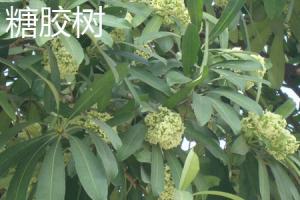How Big of a Pot for Spider Plant: Finding the Perfect Fit
Spider plants are a popular indoor plant because of their low maintenance and aesthetic appeal. But to ensure their growth and health, choosing the right pot size is critical. In this article, we will discuss how big of a pot for spider plant is ideal and why it matters.
Why Pot Size Matters for Spider Plants
The size of the pot directly affects the root system and overall growth of the spider plant. If the pot is too small, the roots become crowded and have limited space to grow, resulting in stunted growth and a weaker plant. On the other hand, if the pot is too big, the soil may hold excess water and lead to root rot, disrupting the plant's health and growth.
Moreover, the size of the pot also affects the aesthetic value of spider plants. Choosing the right pot size and style can enhance the plant's appeal, making it an attractive addition to any indoor space.
Factors to Consider in Choosing Pot Size for Spider Plants
Here are some important factors to consider when determining how big of a pot for spider plant is ideal:
Plant Size and Growth Habit
Spider plants come in different sizes and growth habits. For instance, the smaller varieties like the "Bonnie" and "Hawaiian" spider plants are ideal for smaller pots, while the larger varieties like the "Variegatum" and "Vittatum" spider plants would require bigger pots to accommodate their size and growth.
Root System
Spider plants have a robust root system that requires ample space to grow. Choosing a pot that is not too small or too big will allow the roots to expand healthily and provide the necessary nutrients for the plant's growth and development.
Drainage
Choosing a pot with adequate drainage holes is necessary to avoid overwatering and root rot. The pot should be deep enough to hold the soil and roots but not too deep that the drainage holes become blocked by soil.
Indoor Space and Aesthetic Appeal
Lastly, the pot size and style should complement the indoor space and enhance the plant's appeal. The pot should neither be too small that it looks insignificant nor too big that it becomes overwhelming and overshadows the plant itself.
Ideal Pot Size for Spider Plants
Based on the factors discussed above, the ideal pot size for spider plants ranges from 4 to 10 inches in diameter. For smaller varieties, a pot size of 4-6 inches would suffice, while larger varieties would require pots of up to 10 inches in diameter.
It is essential to choose a pot with adequate drainage holes and deep enough to accommodate the roots but not too deep that the drainage is blocked. Furthermore, the pot size and style should complement the indoor space and enhance the plant's aesthetic appeal.
Caring for Spider Plants
Spider plants are low maintenance and easy to care for, making them a popular indoor plant choice. Here are some tips on how to care for your spider plant:
Watering
Spider plants require moderate watering, and the frequency depends on the pot size, environment, and humidity. Overwatering can lead to root rot, while underwatering can cause the leaves to wilt and turn yellow. It is essential to water the plant when the soil is dry to the touch, about once or twice a week.
Light and Temperature
Spider plants prefer bright, indirect light and a temperature range of 60-75℉. Direct sunlight can scorch the leaves, while low light can hinder growth and development. It is ideal to place the plant near a window but away from direct sunlight.
Fertilizing
Spider plants benefit from occasional fertilization during the growing season. It is recommended to use a balanced all-purpose fertilizer once a month to provide the necessary nutrients for healthy growth.
Conclusion
Choosing the right pot size is crucial for the growth and health of spider plants. A pot not too small or too big and with adequate drainage holes is ideal. The pot size should also complement the indoor space and enhance the aesthetic appeal of the plant. With proper care and maintenance, spider plants can thrive and add beauty to any indoor space.

 how many times do yo...
how many times do yo... how many planted tre...
how many planted tre... how many pine trees ...
how many pine trees ... how many pecan trees...
how many pecan trees... how many plants comp...
how many plants comp... how many plants can ...
how many plants can ... how many plants and ...
how many plants and ... how many pepper plan...
how many pepper plan...































